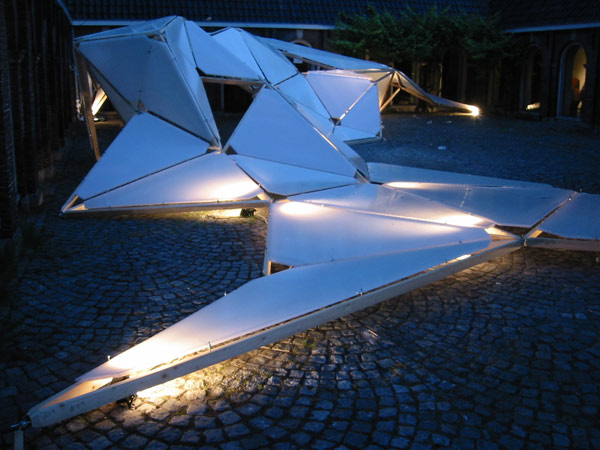“Fabricating the Future” by Neil Leach and Phillip F. Yuan.
Critical essay by Hristo Kovachev explains the development of the parametricism trend, digital fabrication style, use of materials, approach of design, tectonic methodology and logics. Those themes are presented as an evolution of new fabrication techniques that are using a complex, multi-dimensional materials in architectural practice and indicate they emergence throughout the conventional concept of craftsmanship and use of traditional materials. Read More
Fabricating The Future
Modelling behavioral oscillations

BIG Little Denmark project, which attempted to map sociological behavior by simplifying it to the data points of monetary consumption
In DeLanda’s review of Deleuze, one of his primary summaries is that oscillating behaviors form the patterns of actualization behind molecular, biological, and socio-technic structures. If accurate, then this base principle could be used to build virtual models of such processes, and to generate new models based on the same patterns of organization.
editing the urban encyclopedia
 Of the critical proponents of emergent intelligence outlined by Thompson in ‘Emergence: the connected lives if ants, brains, cities and software’, the notion of useful ignorance is the most puzzling. It poses that an ignorance of the global order is critical for maintaining an efficient interaction and exchange of information between subordinate parts of the system. For example, a single neuron’s awareness of the behavior of the brain removes it from the scale at which it can develop local knowledge through interaction with its peers, and the system experiences an overall decrease in operating potential. This can be analogously compared to urban life, where street level interactions yield the highest productivity in terms of exchanging information with new parties and expanding the overall knowledge of the system itself.
Of the critical proponents of emergent intelligence outlined by Thompson in ‘Emergence: the connected lives if ants, brains, cities and software’, the notion of useful ignorance is the most puzzling. It poses that an ignorance of the global order is critical for maintaining an efficient interaction and exchange of information between subordinate parts of the system. For example, a single neuron’s awareness of the behavior of the brain removes it from the scale at which it can develop local knowledge through interaction with its peers, and the system experiences an overall decrease in operating potential. This can be analogously compared to urban life, where street level interactions yield the highest productivity in terms of exchanging information with new parties and expanding the overall knowledge of the system itself.
Though the existence of swarm intelligence and the emergence of complex intelligent systems is supported through research at many scales, certain questions arise when thinking about implementation at the scale of our cities. Does a knowledge of the existence of emergence as a social phenomenon play into our societal structure? If so, who are the actors in implementing this knowledge? How is it implemented? How do we overcome the paradox of implementing strategies which will strengthen the phenomenologics of swarm intelligence within our societal structure while curbing the development of a top-down state where knowledge of the systems overall operations are reserved only for those who are in the know?
On Growth and Form
In the chapter we read from the book “On Growth and Form”, D’Arcy Wentworth Thompson analyzes the study of the form of nature primarily with descriptive methods and later in an analytical way, mathematically described and represented by mathematical formulas and coordinate systems.
The analysis of the forms by mathematical description are made in four different ways: by changing the dimensions of the coordinate system; by changing the direction and dimension of the point of origin; by making the coordinates system oblique through changing its position to a certain angle; and finally by using radial coordinates coming from a single point.
An important point mentioned by Thompson is that he could mathematically describe the nature in a generalized manner, but never in a particular way. For example the mathematical description of the shape of a wave in the ocean that will never be the description of a specific wave, that has its form depending on its origin and its relationship towards the winds of where it is.
We can find the application of descriptive systems by mathematical coordinates in 3D software we use for graphic representation of architecture and design.
Digital Techtonics – Material Complexity By Manuel DeLanda – Critical Review
Seeing the world through a philosophical point of view, concepts such as toughness or rigidity are emergent properties of metalic materials that result from the complex dynamic behaviour of its components. Also dynamics of population of dislocations are closely related to the population dynamics of every entity, despite the big difference in nature and the behaviour of the components, a population of interacting entities, will dispay same collective behaviour as long as the interactions are non linear and also as long as the population operates in a non thermodynamic equilibrium.



